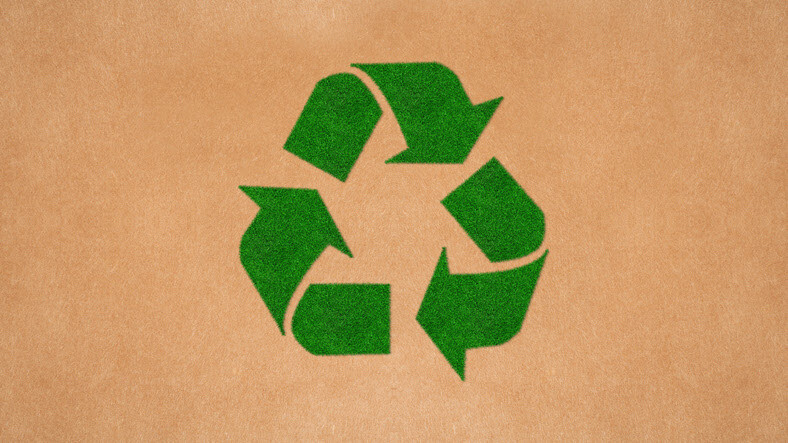Let's work together to tell your storyto build your brandto drink more coffee
We'd love to get to know you.
CW Print + Design is now CW Creative! Learn More

As society shifts towards more sustainable living, the demand for eco-friendly practices in every aspect of business, including print marketing, has skyrocketed. A recent study by the Harvard Business Review highlighted the growing trend among Gen Z and Millennials, who show a 27% higher likelihood of supporting brands that demonstrate a genuine concern for their environmental impact. This shift is a clear indicator that sustainability isn’t just a buzzword—it’s a business imperative, especially in the print industry. But how do you balance the effectiveness of print marketing with the necessity for eco-consciousness? Here’s a deep dive into practices that ensure your print marketing is not only impactful but also kind to our planet.
Our partnership with PrintReleaf goes beyond traditional sustainability practices by directly contributing to global reforestation projects. For every print job we undertake, trees are planted in areas of need, effectively offsetting the paper used and ensuring a sustainable print cycle. This initiative not only demonstrates our dedication to reducing our ecological footprint but also offers our clients a way to be part of a larger, global conservation effort.
Through PrintReleaf, we guarantee that all paper consumption associated with our print projects is accurately measured and counterbalanced by planting an equivalent number of trees. This process is verified by third-party audits, providing transparency and accountability to our clients. Our customers receive certificates acknowledging their contribution to reforestation, making each print project a step towards environmental sustainability.
The impact of these efforts extends far beyond the immediate environmental benefits. By actively participating in reforestation, we're helping to rebuild ecosystems, support biodiversity, and provide livelihoods to communities around reforestation sites. This holistic approach to sustainability showcases the profound positive effects that conscious business decisions can have on the planet.
One of the simplest yet most effective ways to green your print marketing is by opting for eco-friendly alternatives. Recycled papers or cardstocks not only lessen the demand for new raw materials but are also often more cost-effective. Look for products certified by the Forest Stewardship Council (FSC) to ensure your materials meet strict environmental and social standards. Making the switch to recycled paper is a straightforward step towards reducing your ecological footprint while also potentially lowering your company's production expenses.
Recycled materials offer an excellent opportunity to showcase your commitment to sustainability. By incorporating these into your print materials, you're not just making a statement about your brand's values but also contributing to a larger movement towards environmental responsibility. This approach can significantly enhance your brand's image and appeal to a broader, more eco-conscious audience.
Moreover, using recycled content helps in preserving natural resources. The reduction in demand for new paper production can have a substantial impact on conserving forests and reducing energy consumption associated with manufacturing. It's a win-win: you maintain high-quality, effective print marketing while actively contributing to the planet's well-being.
After your print campaign is complete, what happens to the leftover materials? Implementing a robust recycling or repurposing program is essential for minimizing waste. Consider saving sturdier printed pieces, like postcards or thick cardstock signs, for future use. Not only does this practice reduce waste, but it also exemplifies a commitment to sustainability that can resonate with your customers.
Efficient planning plays a crucial role in reducing excess print materials. By leveraging CRM and other marketing tools to accurately identify your target audience, you can ensure that your print runs produce only what's needed, thus minimizing waste. This approach not only helps in conserving resources but also in optimizing your marketing budget.
Recycling and repurposing initiatives underscore your business's dedication to environmental stewardship. By thoughtfully managing the lifecycle of your print materials, you're not just reducing your ecological footprint; you're also setting a standard for sustainable practices within your industry. This forward-thinking approach can significantly bolster your brand's reputation and appeal to a growing demographic of environmentally conscious consumers.
Mistakes in print materials can lead to unnecessary waste, as errors often require reprinting. To mitigate this, employ rigorous proofing tools and team reviews to ensure accuracy and clarity in your materials. This step is crucial for avoiding waste and enhancing the eco-friendliness of your print marketing efforts.
A thorough proofing process ensures that your materials are correct and ready for distribution, saving both resources and the energy needed for potential reprints. It’s a simple yet effective way to align your marketing practices with sustainability goals. Moreover, this attention to detail can significantly enhance the overall quality and impact of your print materials.
By integrating proofing into your production process, you're not just conserving resources; you're also ensuring that your message is communicated effectively and without error. This level of precision and care in your marketing materials reflects well on your brand, demonstrating a commitment to quality and sustainability that can attract and retain customers.
Adopting eco-friendly printing practices is more than a trend; it's a crucial step towards sustainability that can significantly impact your brand's reputation and bottom line. By choosing prioritizing reforestation, recycled materials, implementing recycling initiatives, and ensuring a thorough proofing process, you can create print marketing materials that are not only effective but also environmentally responsible. Embrace these green printing techniques to showcase your brand's commitment to sustainability and make a positive impression on your customers and the planet.
Ready to make your print marketing greener? Contact us today to discover how we can support your eco-friendly printing needs.
Embracing eco-friendly printing practices boosts your brand image by aligning with the values of eco-conscious consumers, reduces production costs through efficient use of resources, and minimizes your environmental impact by conserving natural resources and reducing waste.
PrintReleaf is our partner in sustainability, enabling us to contribute to global reforestation. For every print job, we plant trees to offset the paper used, ensuring a sustainable cycle of paper consumption and contributing to ecosystem restoration and biodiversity support.
Using recycled materials reduces the demand for new raw resources, lowers production costs, and demonstrates your commitment to environmental responsibility. It's a practical step towards sustainability that also enhances your brand's appeal to eco-conscious audiences.
Implementing recycling initiatives and efficient planning helps minimize waste. By accurately identifying your target audience and optimizing the quantity of printed materials, you can avoid excess production and encourage the recycling or repurposing of leftovers, setting a standard for sustainable practices within your industry.
Rigorous proofing processes are essential to avoid unnecessary waste from errors that require reprinting. By ensuring your materials are accurate and clear from the start, you align your marketing practices with sustainability goals, saving resources and enhancing the quality and impact of your print materials.
We'd love to get to know you.

